A labour of love: French pilot awarded FAI Diploma for his handbuilt Hatz biplane
In October 2025, Michel Pallier will travel to the FAI Awards Ceremony in Finland to receive a FAI David Faulkner Bryant Diploma in recognition of his labour of love: a handbuilt construction of a Hatz CB1 biplane which took 13,000 hours to complete.
The story of this magnificent flying machine begins in 1986...
At 25 years old, and with around 100 hours flying experience, Michel Pallier was leafing through the Experimental Aircraft Association magazine when his attention was grabbed by an advert for plans to build a vintage style biplane. Immediately besotted, he sent away for the design. And so began a relationship that was to become entwined with his life for decades to come.
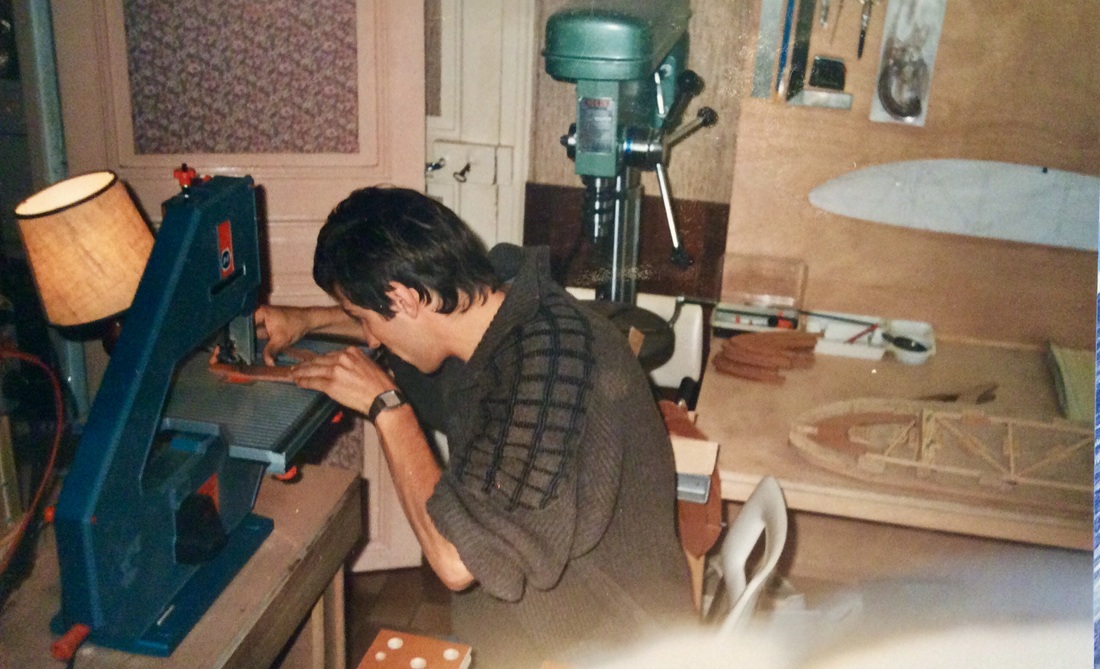
1986: work on the Hatz begins in Pallier's bedroom
Aged 48 and after 13,000 hours of work, the Hatz took to the skies for the first time, flashing its spectacular gold and blue paintwork to the onlookers gathered below.
Recognised for ‘Best Workmanship’ at the Euro Fly-in in Brienne le Chateau, France, in July 2024, Pallier was put forward for the FAI David Faulkner Bryant Diploma by the Aero Club de France.
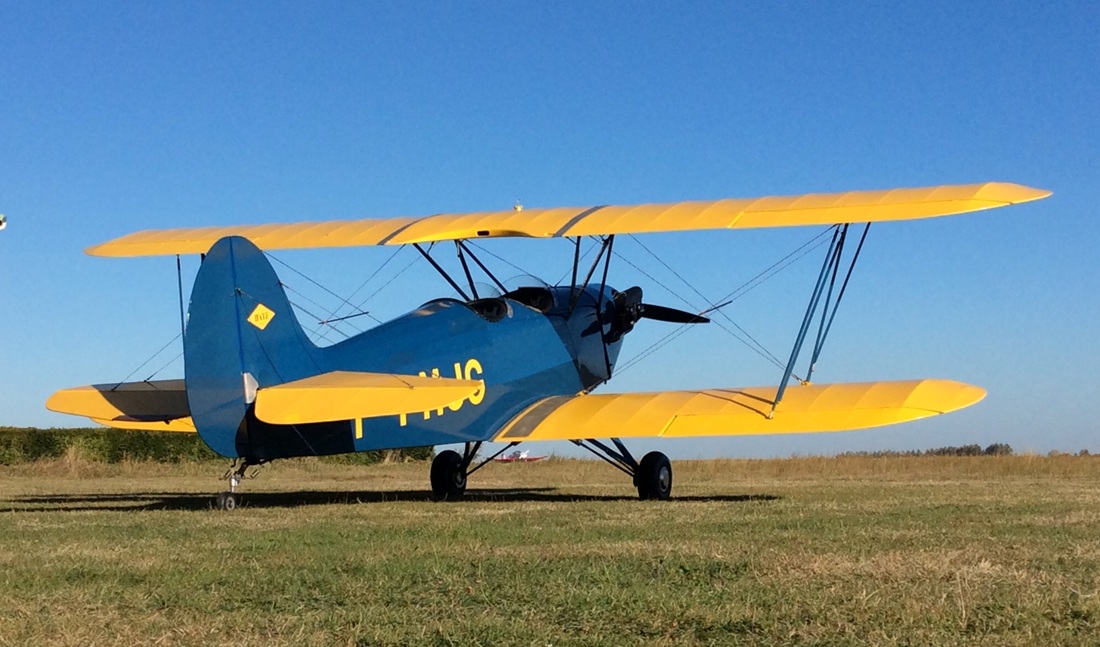
Michel Pallier's Hatz CB1
About the Hatz CB1
The original design for the aircraft was created by John Hatz: a small WACO biplane with two seats and an open cockpit. The first prototype took to the skies in 1968 with a 65hp Continental engine and it was Dudley Kelly who adapted the design for home builders in 1977.
- Span: 7.72m (25 feet, 4 inches)
- Length: 5.80m (19ft)
- Height: 2.39m (7ft 10in)
- Wings: clark y airfoil, chord 50 inches (1.27m)
- Empty weight: 417kg (920lb)
- Maxi weight: 635kg (1400lb)
- Load limits: + 5g /- 4g
- Fuel tank: 75 litres (20 gallons). 100ll and auto fuel sp98 (france)
- Engine: rolls royce 0-200 a. 100hp at 2750 rpm
- Fuel consumption: 25 litres/hour at 2450 rpm (cruise)
- Propeller: wooden, two blades, evra d11.28.4.c - diametre 1.76m (6ft 9in)
Already mechanically minded and good with his hands, Pallier was able to construct almost all the aircraft on his own, with the aid of Tony Bingelis and Henri Mignet books. Only the propellor and fuel tank were left to professionals.
Pallier’s first workshop was his bedroom, but as the aircraft grew, so too did his need for space. He bought an apartment, knocking down the walls to create a larger workspace. To carry out the oxyacetylene welding, Pallier enrolled on a course to learn the skills which would enable him to complete the structure.
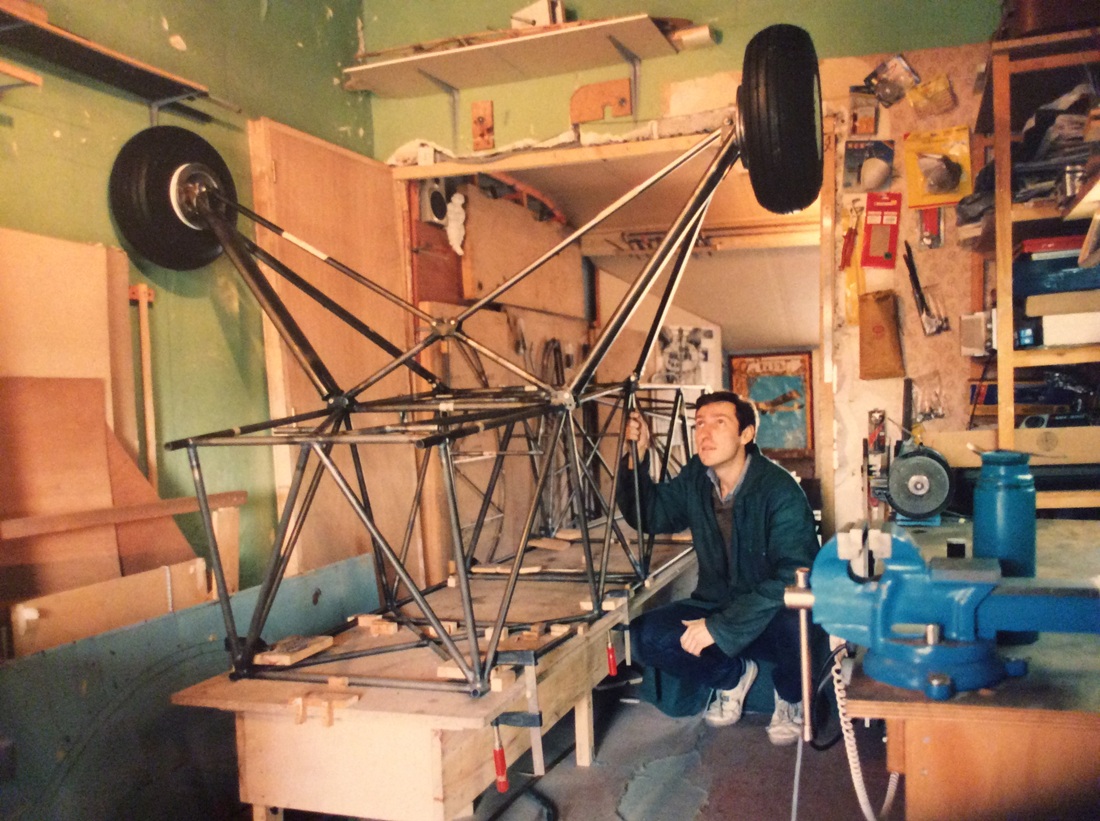
1993: the Hatz taking shape
In 1997 Pallier adopted a friends’ garage to assemble the wings.
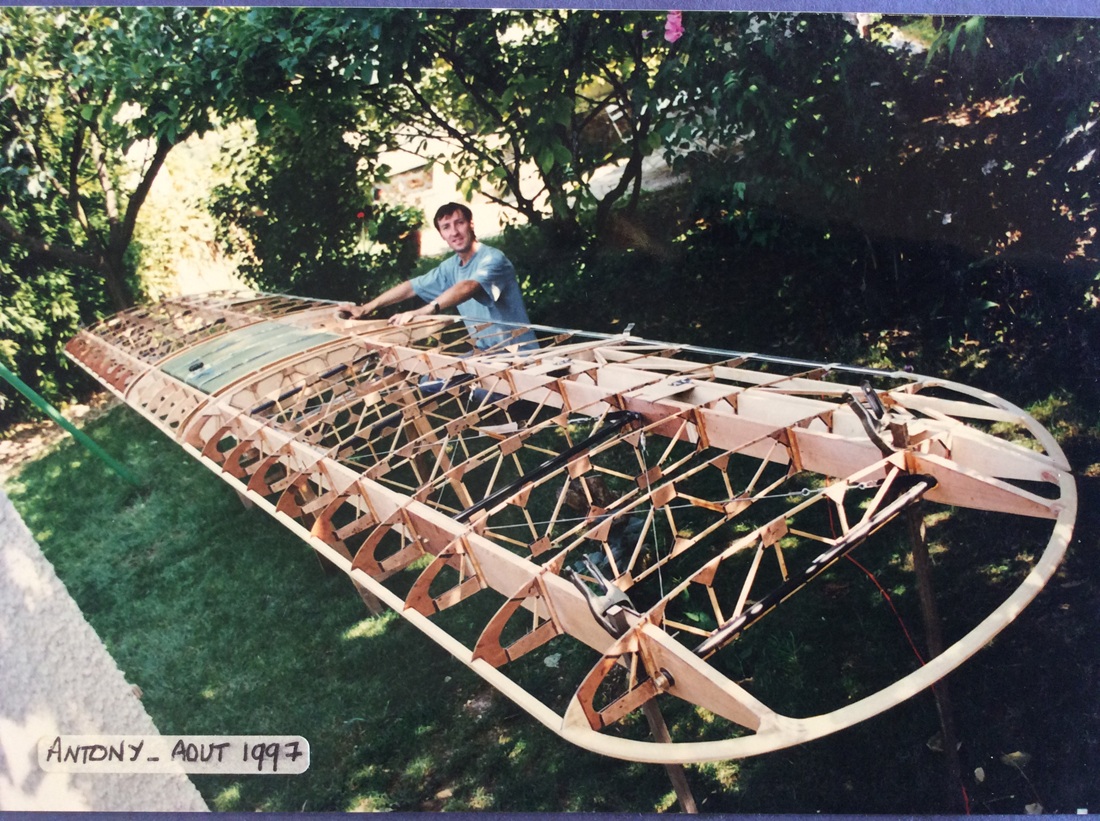
1997: wings under construction
In December of that year, the fuselage was carefully extracted from the apartment window to be united with its wings.
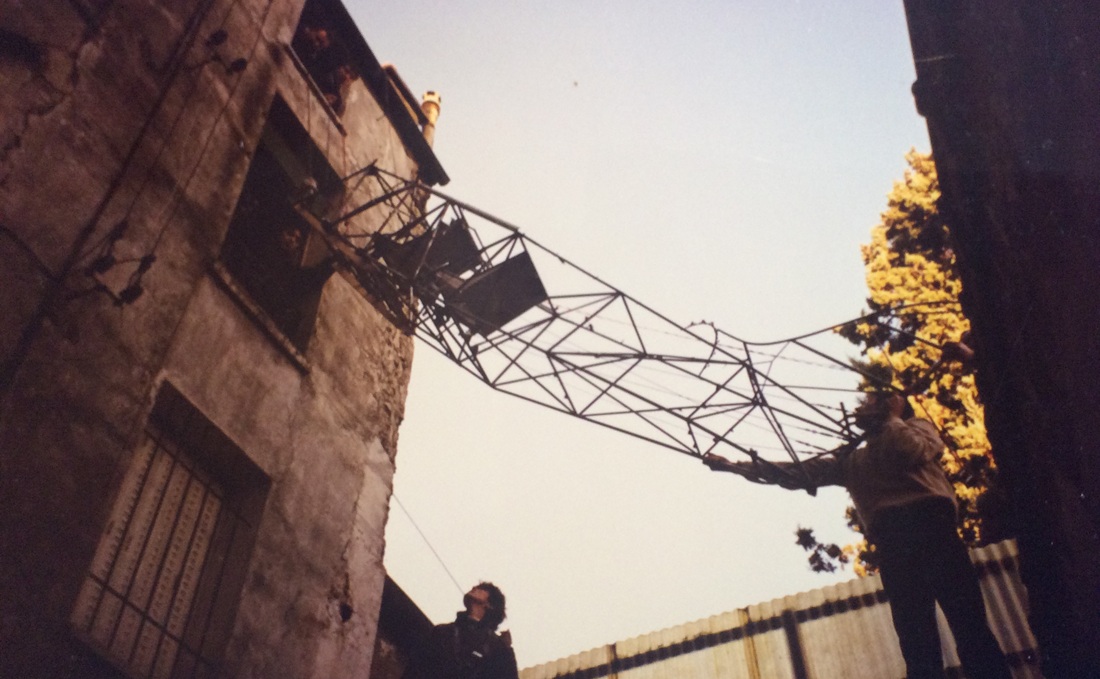
Family and friends lend a hand
In 2004, Pallier made a painting booth. The blue was completed first, then yellow embellishments were added, and finally the emblematic Hatz logo was handpainted and mounted.
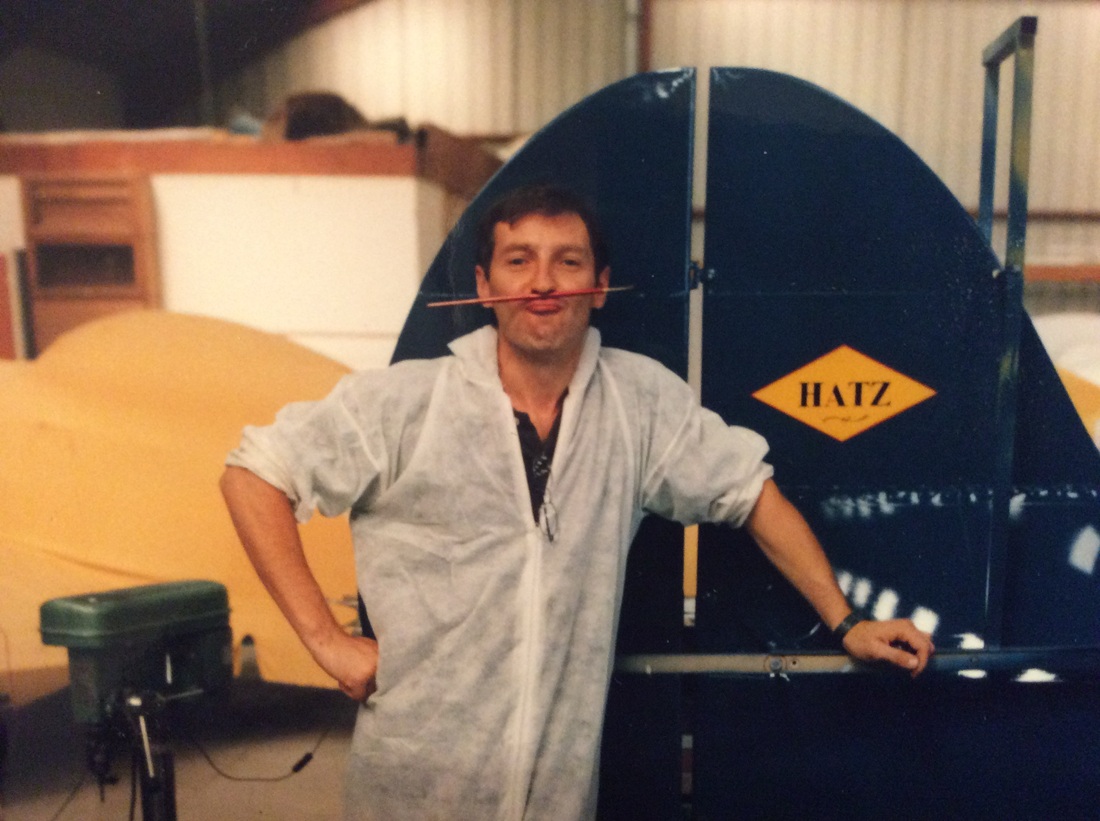
The paintwork was completed in 2007
Pallier then revised and installed a Rolls Royce 0-200A engine (under licence from Continental), ready for the Hatz’s inaugural flight in 2008.
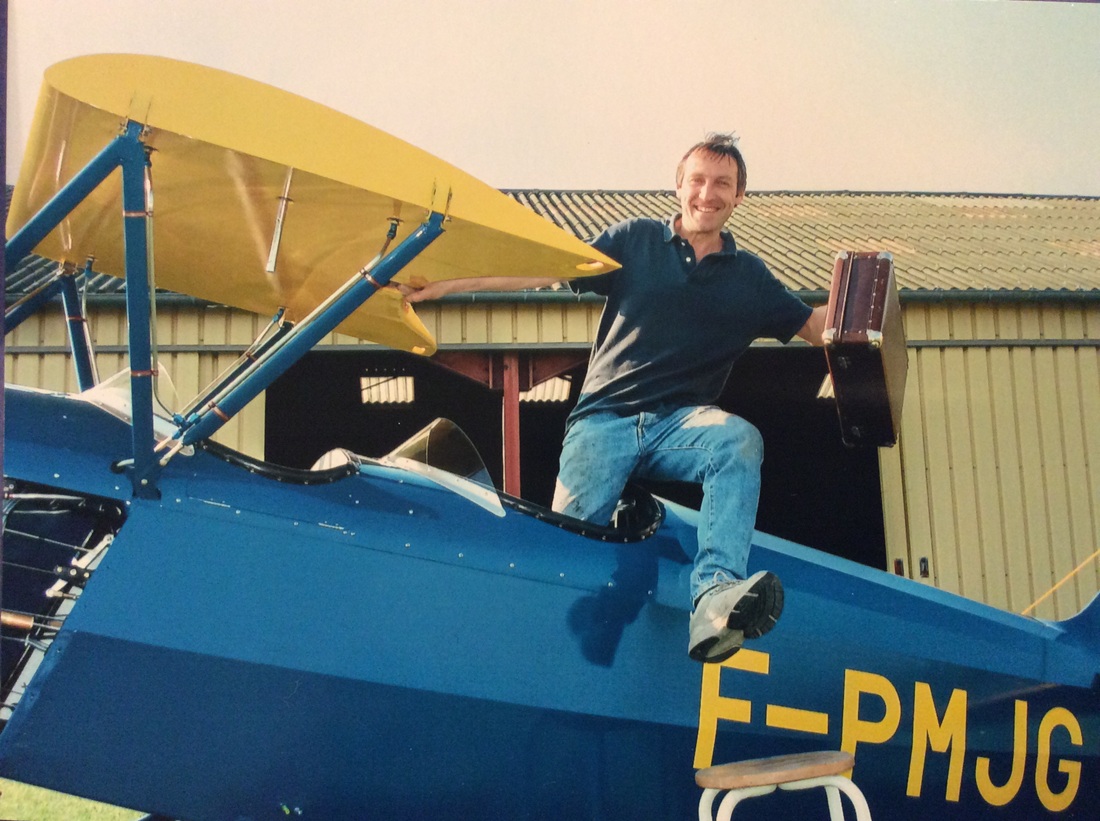
Interview with Michel Pallier
Michel Pallier kindly took some time to share his experience of constructing his award-winning aircraft in this interview:
What made you choose this particular aircraft, had you already flown or been involved with vintage aeroplanes?
It was love at first sight in 1985! I read a classified advert for Hatz CB1 plans in Sport Aviation magazine. This antique looking airplane matched all my wishes: Piper J3 spirit, open cockpit, 2-seater, docile (so the article said!), reliable engine. Less intimidating than a Pitts or Skybolt for the inexperienced pilot I was (with 100 hours flying time and no taildragger experience).
I had not had any involvement with vintage aircraft before, only plastic model airplanes. But I had spent hours doing mechanics on my old car and I had a deep admiration for the pioneers of aviation. Building this airplane myself would be a way to move into the unknown and catch the spirit of "those magnificent men and their flying machines".
Can you remember how you felt when you took off for the first time?
It was July 18th 2008: my first take off after 22 years of construction. I was focused and confident; rolling sessions went well, the engine parametres were OK. My girlfriend Jacqueline and a handful of friends were at the edge of the runway…
Full throttle, acceleration, take-off… But the plane showed a strong tendency to turn right while the traffic pattern is left-handed. I managed to bring the plane to a vertical field to evaluate the stall speed. I was out of my comfort zone and anxious. My plane was flying badly. All that work for this? Upon landing, my friends, overjoyed by this apparently perfect flight, were surprised to see me pale and silent.
The next morning I modified the wings setting by adjusting the length of wing struts and flying wire. The second flight was perfect! (The wing setting has now been the same for 17 years.)
After this smooth flight, I was shopping at the supermarket, and suddenly I burst into tears! For several minutes I couldn’t stop crying.
The project has accompanied a lot of your adult life, was it difficult to find time to spend in the workshop?
I was working as a flight attendant for Air France (long haul) and my girlfriend, Jacqueline, was a nurse. I didn’t like building when she was not working. I used to drop her off at work and then go to the workshop, then we would meet up at home in the evening. The first years I could log 30 hours building time a month, later I worked part-time at Air France, spending 60 hours a month building the Hatz. At the end I took months off without pay to finish it. I have three notebooks filled with sketches and construction hours, so I know that total building time is 13000 hours.
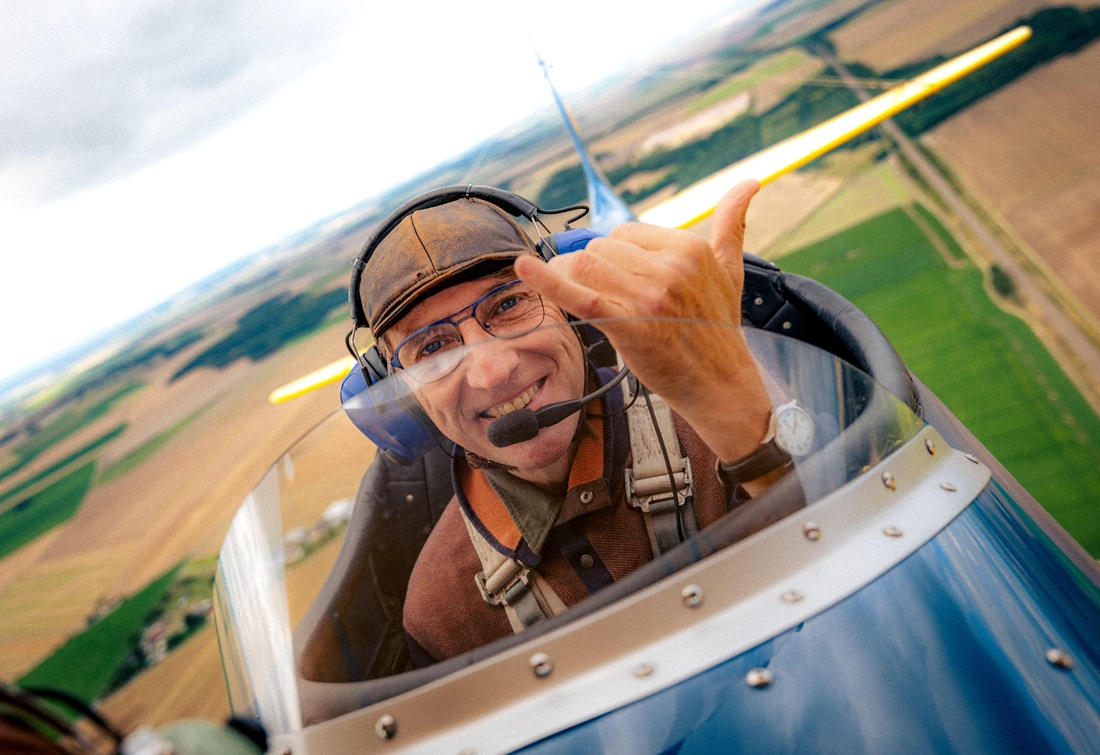
The Hatz CB1 in flight. Image credit: A. Lallevée 2024
How regularly do you fly the Hatz nowadays?
I fly regularly all year round but not much. Around 24 hours per year is the goal (on average, two hours per month). I make three or four small local flights each month plus one or two longer distance flights per year. I try to keep the plane always ready to go: fuel, oil, battery, tyre pressure checked, then I wait for the sun to show up. My total flying time has been 350 hours in 17 years.
How do you feel about winning the FAI David Faulkner Bryant Diploma?
When I was notified that the FAI David Faulkner Bryant Diploma was awarded to me I felt honoured and much more moved than expected. Last year the Hatz won ‘Best of Show’ at Eurofly’in after 16 years of flight in the shadows: I had the same feeling. I looked at the plane with new eyes, thinking, “This machine speaks to people!”
I have long wanted to write the history of construction of the Hatz and being a candidate for the FAI Diploma gave me the opportunity to do so and I felt good about it… But being awarded with an international diploma? This is proof that I am indeed "a magnificent man in his flying machine"!
Jacqueline and I are so happy to attend the FAI Award ceremony on October 22, 2025. We always wanted to go to Finland.
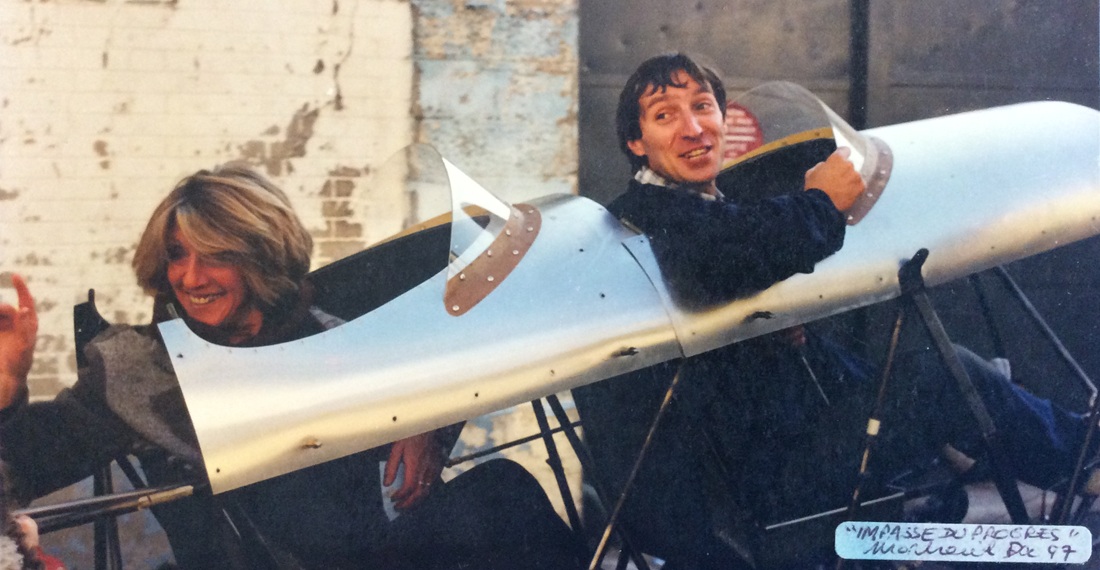
Jacqueline and Michel try out the cockpit for size in 1997

